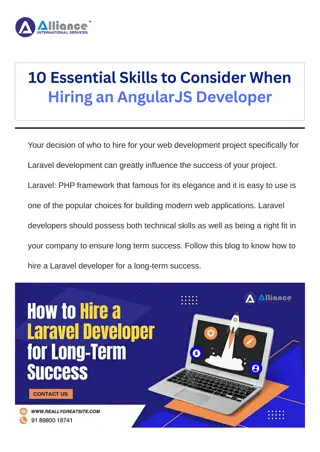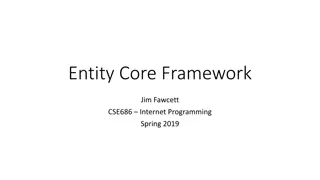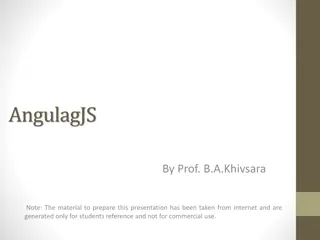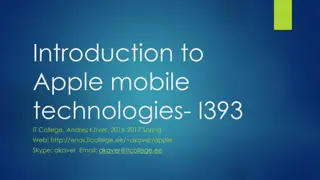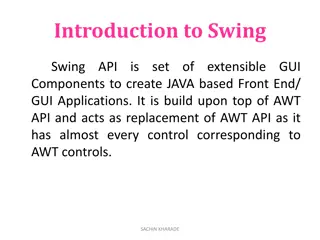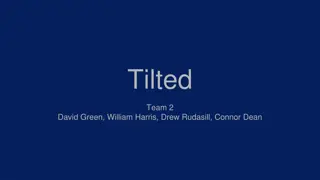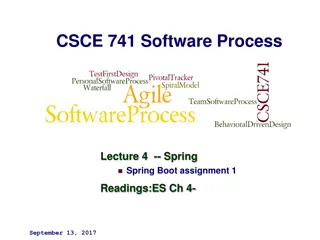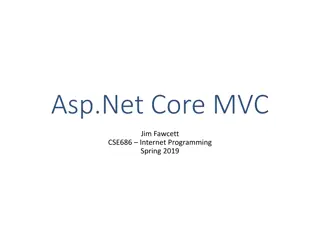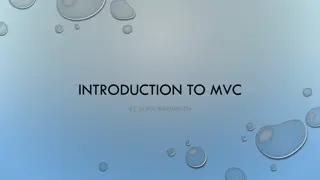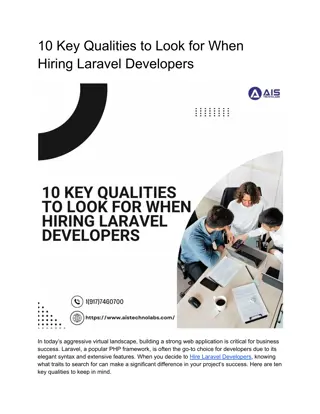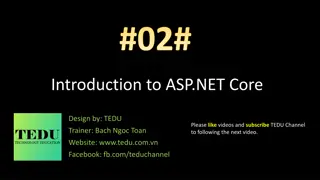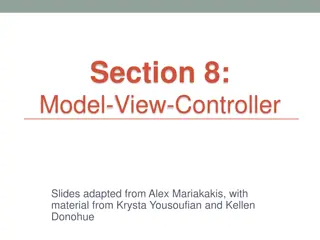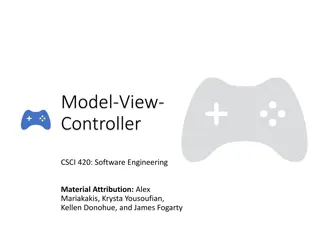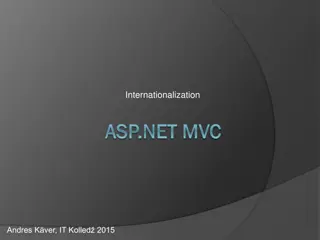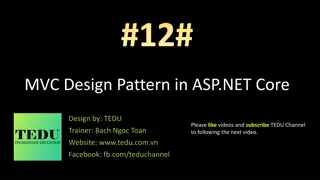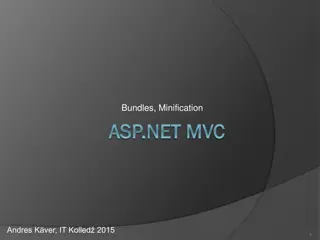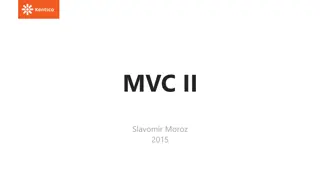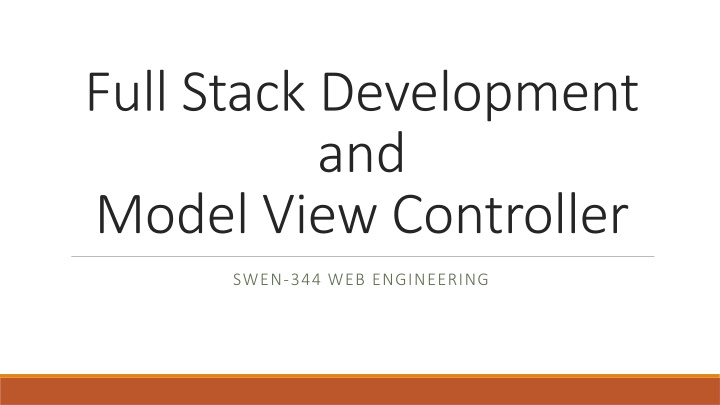
Web Development Technologies and Stack Examples
Explore the concept of full stack development, the popular MERN and LAMP stacks, and the Model-View-Controller (MVC) design pattern in web engineering. Learn about technologies like MongoDB, ReactJS, Node.js, and more.
Download Presentation

Please find below an Image/Link to download the presentation.
The content on the website is provided AS IS for your information and personal use only. It may not be sold, licensed, or shared on other websites without obtaining consent from the author. If you encounter any issues during the download, it is possible that the publisher has removed the file from their server.
You are allowed to download the files provided on this website for personal or commercial use, subject to the condition that they are used lawfully. All files are the property of their respective owners.
The content on the website is provided AS IS for your information and personal use only. It may not be sold, licensed, or shared on other websites without obtaining consent from the author.
E N D
Presentation Transcript
Full Stack Development and Model View Controller SWEN-344 WEB ENGINEERING
Full Stack Development Full stack is a catchy term for the way different technologies send, and receive, data from one another in order to implement a cohesive application. Typically a web application. You can visualize them as a stack (i.e., the data structure) of technologies that are connected via the inputs they receive and the outputs they produce For Web Applications this typically means you have (roughly*): One or more front-end technologies (e.g., HTML, CSS, React) Some kind of server technology (e.g., nodejs, express, asp) Some kind of database technology (mongodb, mysql, postgresql) There can be things between those depending on how specific we want to be. Could consider react/angular/vue to be front end frameworks (i.e., they generate html/css) while html/css are front- end languages*. But the list above is more or less a generic full stack.
Stack Examples You will likely run into several stack abbreviations. Here are a few examples: MEAN Stack: MongoDB, Express, AngularJS and Node.js. MERN Stack: MongoDB, Express, ReactJS and Node.js LAMP Stack: Linux, Apache, MySQL and PHP.
Lets go through a couple MERN Stack: MongoDB, Express, ReactJS and Node.js MongoDB is the database. Uses JSON-like documents for interacting with data; it integrates well with the javascript everywhere philosophy of this stack Express is your web server. It allows you to define your routes and endpoints amongst other server concerns ReactJS is a front-end UI development tool that you use to define your application view Node.js is the application runtime for MEAN stack. It is a javascript runtime environment for executing javascript outside of the web browser. It is the technology that ExpressJS and ReactJS are built on. LAMP Stack: Linux, Apache, MySQL and PHP. Linux is the base of this stack. Provides package management and stability Apache is the webserver. This is where you ll define your routes and endpoints amongst other concerns MySQL is the database. For this stack, we are using a relational database. PHP is the front-end UI development language for this stack. It is how we will generate the webpage to be rendered in the browser
Model View Controller Definition Model View Controller (MVC) is a design pattern that is typically used to develop user interfaces by dividing program logic into three components The Model This is application-related data independent of how it will be presented or visualized. One way to think of this is as your data-structure which represents data that is important to your application (e.g., customer data). The data-structure is the model for application-oriented data and this model can be updated through the controller. The View This is all your UI logic. How things will be presented on the screen. For example, will you use tables and dropdowns? What will the user be able to interact with and how? The Controller Sits between the model and the view. It takes commands/input, for example from the view, and determines what it should do based on its input. Typically this is how you would manipulate the model or send information back to the view.
Advantages to MVC Separation of concerns + Loose coupling Dividing the logic between the model, view, and controller groups all of the code that deals with any individual concern. Changes to components tend to not effect others. We can freely change the internals of any individual piece without worrying whether the controller or the view will be able to interact with it The view can change to support multiple, drastically different views The model can support more data or change the types of data it supports The controller is free to modify how it handles requests internally As long as their input and output formats remain the same, the other two components will likely not need to be modified. Changing input/output formats tend to be easy changes to make when it does need to happen.
MVVM A simplified MVC? No explicit controller View-Model contains the logic layer Simpler code file organization No additional routing from controller->view Updates Data Binding View View-Model Model Read data Presentation and business logic
Disadvantages to MVC Propagating changes Some changes will have to be propagated to multiple components, which can be significant at times Difficult to understand and strict about its usage Sometimes it can be difficult to understand how to implement a feature while still following MVC. It can also be difficult to implement it full stop. This may cause developers to break the pattern to avoid the extra difficulty.
Something to think about Which component in MVC do different parts of the full stack correlate to? Where would you put the database? Where would you put React/HTML/CSS? Where would you put Express and Apache? Where would you put nodejs? Keep in mind that these are technologies, so there is not necessarily a 1-to-1 correlation with MVC. However, most of these technologies are used to implement certain components in MVC more often than others.
Conclusion Full stack web development refers to a set of technologies that are used to implement a fully- functional application. In our case, a web site/web application Full stack acronyms describe the technologies that are part of a defined stack. These technologies are what you need to implement the application using that stack. Model View Controller is a pattern typically used to implement user interfaces by de-coupling a data model from the view of the data model and the method of updating/modifying that data model. MVC is good for increasing maintainability and allowing developers to work in-parallel. One of the main downsides is that it can be a difficult pattern to follow in some cases which may lead to developers breaking the pattern
Examples MVC: .NET, AngularJS MVVM: .NET Razor, Angular, ReactJs

